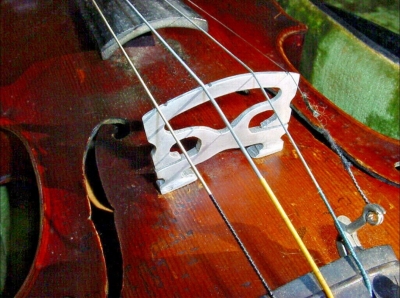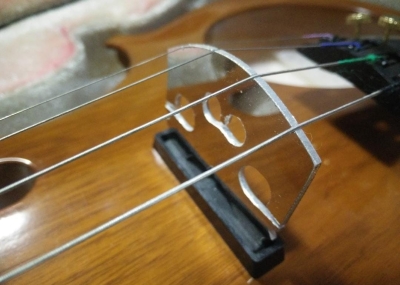Welcome to our forum. A Message To Our New and Prospective Members . Check out our Forum Rules. Lets keep this forum an enjoyable place to visit.
Currently working on errors from the latest (SimplePress) forum update. Many issues have been resoled and others are being worked on. Thank you for your patience.
 Topic RSS
Topic RSS



 (12 votes)
(12 votes) Regulars
 Offline
Offline

@ELCBK . Alas, no. The cheapest way to make them now would be by aluminum extrusion. Generally, a minimum order is in hundreds of pounds of aluminum. If I made a computerized aided design (cad) drawing of the artifact, I could have a wood example made via laser cutter and duplicate it in metal with a mould process.
I would make them from aluminium bronze, which is stronger than aluminium and has a gold colour that does not tarnish.
If the above picture is examined closely, the feet were obviously made wider than the rest of the bridge. No clue why this was done and I do not believe it necessary.
Success is the progressive realisation of a worthy ideal. —Earl Nightingale.
Regulars
 Offline
Offline








@Irv -
I'm not fond of aluminum because of tarnish and some of it's other properties, but your aluminum bronze sounds intriguing - only how much heavier would that be...negligible?
🤔 If you want one, why not find somewhere to get a slice from a rod & maybe go old school? Many times large companies will let you buy a sample of material for prototype work (maybe even for free).
If I wanted to make one, I would use either silicon carbide or diamond for impregnated blades, flat grinding discs/wheels, bits for drill press and a flexible-shaft for fine detail. I'm assuming I'd have to use a lubricant/cooling agent other than water to avoid overheating.
Actually, this is probably overkill for aluminum - if you want to work slowly, there are cheaper, metal cutting blades and bits.
Everything I mentioned is equipment I have from when I was using Borosilicate & other glass - unfortunately I don't have it set up right now and my health is not good, I'm still pretty much bedridden.
Maybe you can find someone who is set up with equipment and ask for help - maybe work out a trade (even I used to love to barter), otherwise it'll probably cost more than it's worth!😣
Then again, it would last for-ev-er! 🤗
Aluminum's high electrical conductivity can be a nuisance (ground everything when sandblasting with aluminum oxide), but suppose I should be more open to the myriad of alloys available.

...actually thought of the possibility of using Borosilicate glass for a bridge - lampworked or cast! (lol)
- Emily
Regulars
 Offline
Offline

@ELCBK . I could likely make one on a scroll saw given the proper blade. Aluminium bronze is about 90% aluminium, so the copper content would impose a minimal weight penalty. I will have to investigate if aluminium bronze plate is available.
Success is the progressive realisation of a worthy ideal. —Earl Nightingale.
Regulars
 Offline
Offline

@Fiddlerman et al. Aluminium is much softer than the alloys used for string windings, so I do not see much of a problem there. I would employ a touch of graphite as a lubricant.
Strangely, scroll saw practitioners do not employ soap while cutting aluminium from the videos I have viewed. They do sandwich the aluminium in cardboard to control shavings.
Success is the progressive realisation of a worthy ideal. —Earl Nightingale.
Regulars
 Offline
Offline








It is recommended here to use WD40 as a lubricant when cutting aluminum.
Regulars
 Offline
Offline








According to this wonderful, illustrated paper,
"The Effect of Wood Removal on Bridge Frequencies" by O.E. Rodgers and T.R. Masino (University of Delaware) - and a ref from Cremer's "The Physics of The Violin", the bridge absorbs vibration and can be adjusted by removing material in certain spots to change specific frequencies (tone).
I can see that making adjustments to the bridge or sound post can possibly help hide wolf tones!
Would be very exciting to see how different bridge materials compare!
Regulars
 Offline
Offline








1 Guest(s)


 Log In
Log In Register
Register






















 Online
Online


